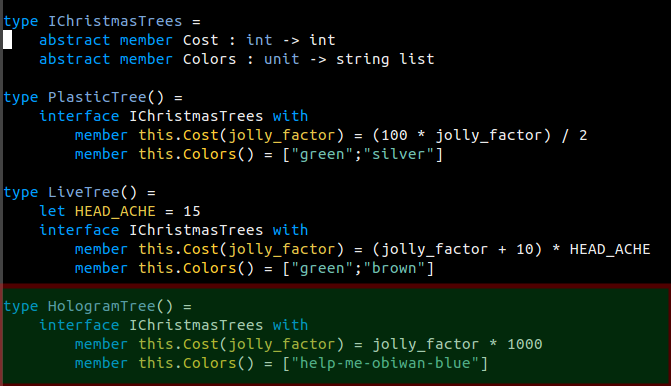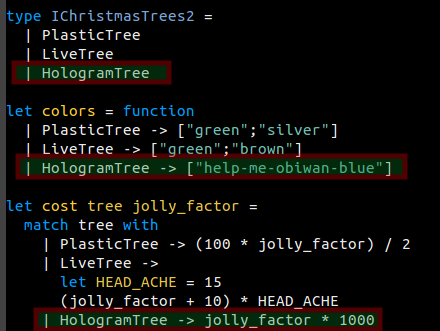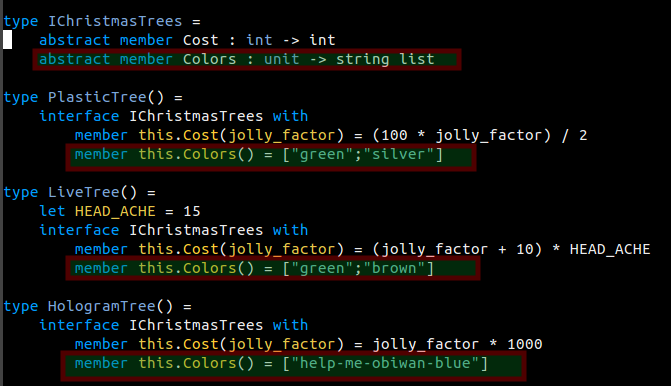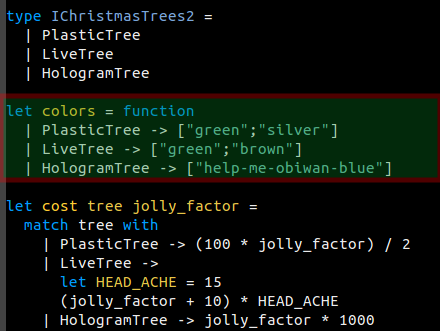One of my favorite things about F# is how it lets you choose how you want to align your data.
In the previous posts highlighting on
pattern matching
and
inverted polymorphism
we covered how pattern matching in F# is safer than if
statements and can replace classes and interfaces for polymorphism. If
you are unfamiliar with these concepts, you might want to skim those
first.
Today, for the 6th day of the F# Advent Calendar I wanted to highlight F#‘s flexibility in solving the “expression problem".
Let’s show the two alternatives, first here is one with interfaces:
type IChristmasTrees =
abstract member Cost : int -> int
abstract member Colors : unit -> string list
type PlasticTree() =
interface IChristmasTrees with
member this.Cost(jolly_factor) = (100 * jolly_factor) / 2
member this.Colors() = ["green";"silver"]
type LiveTree() =
let HEAD_ACHE = 15
interface IChristmasTrees with
member this.Cost(jolly_factor) = (jolly_factor + 10) * HEAD_ACHE
member this.Colors() = ["green";"brown"]
Now the same functionality using pattern matching and discriminated unions.
type IChristmasTrees2 =
| PlasticTree
| LiveTree
let colors = function
| PlasticTree -> ["green";"silver"]
| LiveTree -> ["green";"brown"]
let cost tree jolly_factor =
match tree with
| PlasticTree -> (100 * jolly_factor) / 2
| LiveTree ->
let HEAD_ACHE = 15
(jolly_factor + 10) * HEAD_ACHE
What changes if we want to add a new type of tree? In the class-based example, adding a new type is quite simple, you only need to edit one place to find all the definitions regarding the new type.

In the pattern matching example, adding a new type requires editing every single place you created a function that matches on the type.

Thankfully, in both cases the compiler gives warnings about missing functions or matches, so both are equally “safe”.
What about changing an existing function or adding a new function? We now see the opposite behavior. Classes become harder to edit, because the functions are spread across multiple classes.

A pattern matching system is now the easier to modify, each function only lives in one place.

And that is the expression problem! The best thing about F# is that you get to pick which one is better for each type of data! If you know a certain type will need new behavior often, but rarely need new types, use pattern matching. If you know there is a static set of functions for a set of types, but the type list changes often, maybe the traditional interfaces and classes makes the most sense.
There is no reason not to mix and match the two ways to handle polymorphism, so you are free to choose the best representation for each type of data you have!
Happy F#-filled Festivities!

